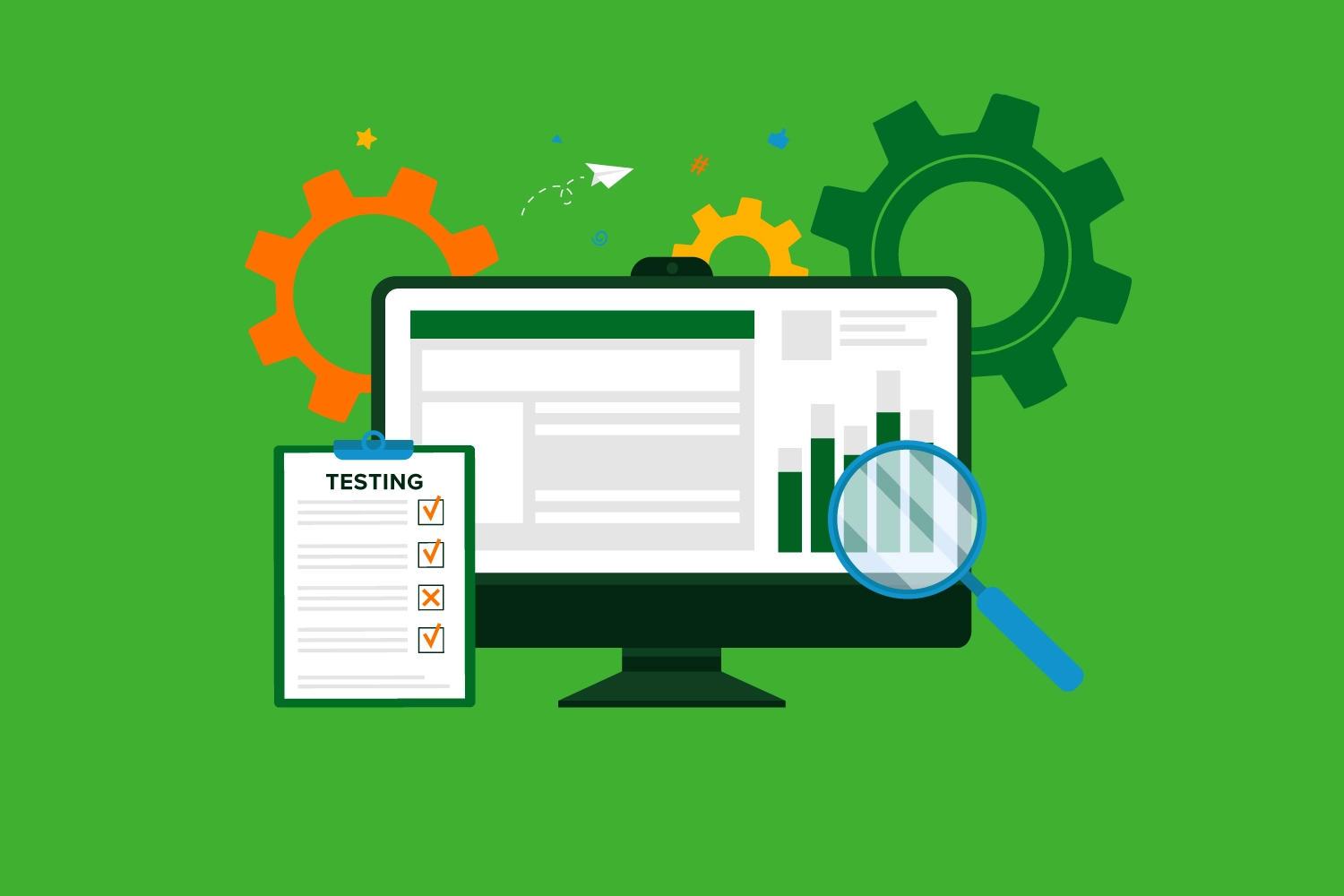Disclaimer: The articles published here on the City of Eau Claire Economic Development Division website are meant to be a helpful starting point as you explore doing business in our community. They’re not the final word on rules, requirements, or what’s best for your unique situation. We always recommend checking in with legal, financial, or other professionals for advice tailored to your business.
Have a business idea you’re itching to try out but aren’t quite ready to go all-in?
That’s where a small-scale, low-risk test run, or pilot program, can help you learn, adjust, and build confidence before launching your new business full throttle. Whether they’re testing a new service, setting up a pop-up, or trialing their product line at a local event, a lot of Eau Claire entrepreneurs start with one of these to get a major head start without breaking the bank or burning out.
Let’s break down how to make sure your pilot program works for you.
Step #1: Start Small On Purpose
Too many entrepreneurs make the mistake of thinking they need to go big right out of the gate by leasing a space, hiring employees, ordering thousands of dollars in inventory. But if you’re just getting started, that’s a lot of pressure and a lot of risk before you’ve even had a chance to see how your business idea plays out in the real world. This isn’t about playing it safe; it’s about playing it smart.
Instead of jumping in headfirst, ask yourself, “What’s the smallest version of this business I can try right now? What’s the minimum viable version that still lets me learn, test, and grow?”
That might look like:
- Renting a booth at the Eau Claire Downtown Farmers Market for a season or at a one-off makers market to try out your products with a crowd
- Hosting a one-night pop-up inside a coffee shop, boutique, or gallery (Many local businesses love to support entrepreneurs—just ask!)
- Offering services to a small group of early customers to test your pricing, process, and value
- Partnering with a complementary business to cross-promote or co-host an event, like a baker teaming up with a local coffee shop or a fitness coach running a trial class at a community center
Some local entrepreneurs also test their ideas from home or online:
- Selling through Instagram or Facebook Marketplace
- Running a short-term Etsy shop or local delivery service
- Starting a pre-order campaign to gauge interest before producing anything at scale
Pilot programs are all about learning. They help you answer real questions, such as whether people will actually buy what you’re selling, what your customers asked for that you didn’t expect, what’s harder than you thought it would be, etc. Chances are, you’ll discover things you never would’ve predicted, and that’s the point.
So, if your idea still feels too big to tackle, shrink it down. Test it and learn from it. Then you can grow your budding business with more clarity and confidence.
Step #2: Define Success Before You Launch
Before you start any selling or promoting, take a beat and write down a few clear goals for your pilot program. Not just vague hopes like “get my name out there” or “see how it goes” either; we’re talking about specific, measurable outcomes that will help you make smarter decisions. Think about what kind of feedback or results would tell you whether you’re on to something, you need to tweak a few things, or you should head back to the drawing board altogether.
Some pilot goals might include:
- Getting honest customer feedback about your product or service
- Seeing how much real-world demand there is before you scale up
- Testing different price points to find what feels right for your audience
- Gauging whether the idea works better in certain locations, at specific times, or with particular types of customers
- Figuring out how long it takes to produce or deliver what you’re offering and whether that’s sustainable long-term
The key is being specific. “See if people like it” sounds nice, but it’s not a goal you can measure. A better version might be, “I want to sell at least 50 units in two weekends and collect five solid testimonials I can use in my marketing materials,” or “I want to book 10 trial appointments, and at least 3 of them should turn into repeat customers within a month.”
Clear goals help you stay focused when you’re in the middle of the hustle. They also make it easier to evaluate your pilot afterward. When you know what success looks like before you launch, you’re in a much better position to decide what comes next.
It’s not about judging yourself; it’s about using real info to build a stronger business. So, set those goals. Then use them as your compass while you’re feeling out the Eau Claire market.
Step #3: Engage Your Audience & Involve Them in the Process
The best pilot programs don’t just generate sales; they build community. And that starts by pulling back the curtain a little and letting people in.
Let your audience know this is a test run. Tell them you’re experimenting, learning, and building something new, and that you’d love their input along the way. Not only does this make your business feel more human and approachable, but it also makes people feel like they’re part of something from the ground up.
And in Eau Claire, that matters. This is a city that shows up for its local makers, dreamers, and doers. People here genuinely want to see new businesses succeed, and they’re often more excited to support you if they feel like they’re part of your journey, not just watching it from the sidelines.
Try a few of these to engage with your audience:
- Post behind-the-scenes updates on social media: setting up your pop-up, prepping your products, or even sharing a small mishap or “lesson learned” moment. People love the real stuff.
- Ask for feedback in person, through Instagram stories, or with a quick QR code survey at your booth. Keep it casual but intentional.
- Show appreciation by thanking early customers by name, tagging them in stories, or giving them a little extra bonus for being part of your test run.
- Celebrate milestones like your first sale, your first full day of business, or your first customer who came back for more. These mini celebrations bring people along for the ride.
- Invite their input by asking them questions: What should your next flavor be? Where should you pop up next? Would they pay more for XYZ? Engaging your audience this way makes them feel invested because you’re listening.
When people feel like they’ve helped shape your business from the beginning, they’re more likely to stick with you when you grow, spread the word to others, and cheer you on every step of the way.
Don’t wait until everything is perfect before you show up. Share the journey, not just the highlight reel. The connection you build early on is one of the most valuable things to come out of a pilot program.
Step #4: Track Everything, But Don’t Overcomplicate It
Tracking your pilot program doesn’t have to be high-tech or time-consuming. It just needs to help you notice what’s working and what’s not.
The truth is, your gut can only take you so far. Patterns and insights start to show up when you take a few moments to write things down even if it’s just on a sticky note or the Notes app on your phone.
After each market day, pop-up, or service appointment, ask yourself:
- What questions did people keep asking?
- Which products or services grabbed their attention first?
- Did people hesitate at the price or seem surprised by how affordable it was?
- When were things busy? When was it slow?
- What did customers say about what they liked or didn’t?
That kind of info is gold when you’re refining your offer or deciding how to move forward.
You don’t need to track everything all at once either. Just focus on the pieces that connect directly to your goals. For example, if you’re testing pricing, keep track of how many people buy at each price point. If you’re testing your messaging, note what phrases or descriptions seem to resonate most. If you’re testing a service, jot down how long each session takes and whether that’s something you can scale.
And when it comes to tools, use whatever makes your life easier: a simple Google Sheet to log sales, customer comments, or foot traffic by hour, your Square or Shopify dashboard, or even just a notebook at your booth to scribble quick thoughts between customers.
The goal here isn’t to turn into a full-time data analyst. It’s just to capture what you’re learning while you’re in it so you don’t forget later or rely on hazy memories. Tracking helps you stop guessing and start making smarter decisions based on what actually happened.
Write it down, keep it simple, and let the patterns speak for themselves.
Step #5: Reflect & Decide What’s Next
You did it! Your pilot is done. You tested your new business idea, connected with real customers, and hopefully learned a lot in the process, so now it’s time for one of the most important steps: reflection.
Before you rush into the next phase—whether that’s scaling up, changing direction, or hitting pause—give yourself space to think through what happened during this trial run.
- What went better than expected?
Did customers respond more enthusiastically than you thought? Did you sell out of something faster than planned? Did your marketing bring in more foot traffic than you anticipated?
- What didn’t go according to plan?
Maybe your pricing was off. Maybe a certain product flopped. Maybe the location didn’t draw the right crowd, or you realized you don’t actually like doing one part of the business. That’s okay. It’s all valuable info.
- What would you change next time?
This is your chance to adjust. Would a different time of day work better? Would simplifying your offerings help? Should you invest in better signage or a stronger social media push?
Don’t treat any of this like a pass/fail test. Your pilot’s goal was never perfection; it was learning. Every challenge, awkward moment, and surprise success is helping you build a business that works not just in theory, but in real life.
Also, don’t forget to ask for feedback from the people who experienced it with you: customers, collaborators, or even the barista who hosted your pop-up. You’ll often hear things from others that you might have missed in the moment.
Finally, decide what’s next:
- Ready to launch? Amazing! Now you’ve got real-world proof to back up your concept.
- Need to tweak and test again? That’s a win too. You’re getting sharper.
- Thinking of pivoting altogether? There’s no shame in that. Pilots are the safest time to figure that out.
Reflection is what turns a test run into a roadmap. Take the time, be honest with yourself, and use everything you’ve learned to make your next move even smarter.
Summing It Up
A good pilot program gives you real-world feedback, strengthens your business idea, and builds your confidence, all without the pressure of pulling off a full-scale launch. If you’re not quite ready to commit to a storefront or full-time hustle, don’t sweat it. By starting small, you can grow more wisely and avoid costly mistakes down the line. Eau Claire, Wisconsin’s ready when you are!
Source: Article Cover Illustration by Freepik

About The Author
Kendall Williams
City of Eau Claire Economic Development Division
Kendall’s role is to champion local businesses at every stage of their journey. Whether it’s helping new entrepreneurs find the right location, supporting existing businesses as they grow, managing the City’s loan programs, or providing data to guide smart decisions, she’s all about making Eau Claire a place where businesses can thrive.




